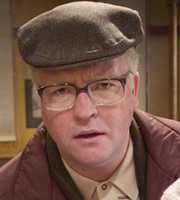- Welcome to Cook'd and Bomb'd.
-
 Richie Sunak - The Decline...
by beanheadmcginty
Richie Sunak - The Decline...
by beanheadmcginty
[Today at 01:18:41 AM] -
 Lived experience
by Dex Sawash
Lived experience
by Dex Sawash
[Today at 01:18:28 AM] -
 Space Ghost Coast to Coast...
by Barry Admin
Space Ghost Coast to Coast...
by Barry Admin
[Today at 01:13:52 AM] -
 Python Wars
by Cold Meat Platter
Python Wars
by Cold Meat Platter
[Today at 01:12:32 AM] -
 Star Trek: Deep Space Nine...
by Blumf
Star Trek: Deep Space Nine...
by Blumf
[Today at 01:12:03 AM] -
 Load of horses gone mental...
by Goldentony
Load of horses gone mental...
by Goldentony
[Today at 01:07:45 AM] -
 Doctor Who - Series 14, part...
by Ambient Sheep
Doctor Who - Series 14, part...
by Ambient Sheep
[Today at 01:07:35 AM] -
 London CaB Meet 4th May 2024...
by pancreas
London CaB Meet 4th May 2024...
by pancreas
[Today at 01:02:42 AM] -
 Is this proof that AI has...
by Theoretical Dentist
Is this proof that AI has...
by Theoretical Dentist
[Today at 12:54:19 AM] -
 Fallout 4 free update coming...
by Mobius
Fallout 4 free update coming...
by Mobius
[Today at 12:49:57 AM]
Members
 Total Members: 17,826
Total Members: 17,826 Latest: skinnylike
Latest: skinnylike
Stats
 Total Posts: 5,584,329
Total Posts: 5,584,329 Total Topics: 106,754
Total Topics: 106,754 Online Today: 1,132
Online Today: 1,132 Online Ever: 3,311
Online Ever: 3,311- (July 08, 2021, 03:14:41 AM)
Users Online
 Users: 49
Users: 49 Guests: 1046
Guests: 1046 Total: 1095
Total: 1095 Goldentony
Goldentony DocDaneeka
DocDaneeka Found Wound Round
Found Wound Round WEARSTHEICECREAM
WEARSTHEICECREAM Mobius
Mobius Lenni
Lenni privatefriend
privatefriend Dex Sawash
Dex Sawash fucking ponderous
fucking ponderous beanheadmcginty
beanheadmcginty Cold Meat Platter
Cold Meat Platter machotrouts
machotrouts lazyhour
lazyhour Ascent
Ascent pupshaw
pupshaw you stole my goddam house
you stole my goddam house Ted_Dibiase
Ted_Dibiase Theoretical Dentist
Theoretical Dentist CS Lewis Jr.
CS Lewis Jr. DelurkedToHelp
DelurkedToHelp pancreas
pancreas JesusAndYourBush
JesusAndYourBush Fishfinger
Fishfinger Stoneage Dinosaurs
Stoneage Dinosaurs Blumf
Blumf Armin Meiwes
Armin Meiwes Hank the Rapper
Hank the Rapper Psybro
Psybro JimminyJillikers
JimminyJillikers Bjarnfredarson
Bjarnfredarson JaDanketies
JaDanketies L. Bizarglow
L. Bizarglow neveragain
neveragain Kankurette
Kankurette Frank Wank
Frank Wank Poobum
Poobum Paul Calf
Paul Calf Butchers Blind
Butchers BlindProof that Roy Lichtenstein was a bastard rip-off merchant who couldn't draw
Started by Santa's Boyfriend, February 11, 2007, 10:55:24 AM
Previous topic - Next topic
User actions

